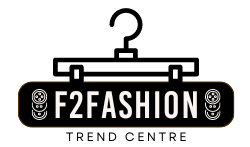
Often called spectacles, eyeglasses like eyeglasses San Francisco help focus light rays that would otherwise be too far apart for the eyes to focus on their own. Typically, a person’s eyes collect light through the pupils and bend it on the retina. Clear, sharp vision is the result. But some people have refractive problems and need glasses to correct their vision. This is known as refractive error and can be caused by problems in the lens or cornea.
Correcting Refractive Errors
Refractive error is a condition where the eyes’ lenses are not adequately focusing light. As a result, people with this condition have trouble recognizing and interpreting fine details and cannot see clearly. These problems can hamper their ability to work, learn, and even perform simple tasks. Fortunately, a simple solution to this problem is correcting refractive errors with eyeglasses.
A recent study found that stock spectacles for people with 6D, 7D, or 8D refractive error were suitable for nearly eighty percent of the participants. The study also noted that one-third of the participants were myopic, while the rest were hyperopic. The study also found that these spectacles significantly improved the quality of life for those who had previously had poor vision. The study results suggest that these spectacles may be the answer to a growing need for vision correction in the developing world.
For people with significant refractive errors, lenses can be quite thick. However, manufacturers have developed thinner lenses for just about any prescription these days. In addition, newer lenses can correct more than one refractive error – for example, multifocal lenses correct both myopia and presbyopia. These lenses are often customized to fit the wearer’s unique eyes. Another option is small contact lenses, bowl-shaped pieces of plastic placed directly on the eyeball to correct a refractive error. These lenses can be fitted by an ophthalmologist or other eye care provider.
Helping People with Presbyopia
If you’re over 40, you may suffer from presbyopia, a condition caused by changes in the eyes’ lenses. This condition causes blurry vision, especially near objects. As a result, many people experience headaches and eye strain from reading too close to the screen. However, there are effective ways to manage this condition, including contact lenses or eyeglasses. Listed below are some of the ways that you can help yourself.
Getting diagnosed is the first step in treating this condition. Eye care providers can help you identify the problem by performing a thorough eye exam. The eye doctor will measure your vision and determine if you are nearsighted, farsighted, or astigmatic. A refraction assessment can also help your provider decide whether or not you need to wear glasses or contacts. The correct prescription for reading glasses depends on your vision problems.
In addition to eyeglasses, you may need other treatments, such as contacts or refractive surgery. To help you understand the best treatments for your condition, your eye doctor can recommend suitable eyeglasses for your eyes and address any other concerns you may have. In addition, eye doctors should take a proactive approach to ensure your vision is as straightforward as possible.
Helping People with High Prescriptions
If you’re struggling with the high prescriptions of your patients, you’re not alone. Many of these patients struggle with bulky eyewear, and these issues can lead to misconceptions about the technology behind lens technology. Fortunately, many ways help them feel comfortable with the eyewear they wear. For example, a practice management consultant and business coach in Chattanooga, Tenn., recommends using the “power of the doctor” to educate high-prescription patients.
